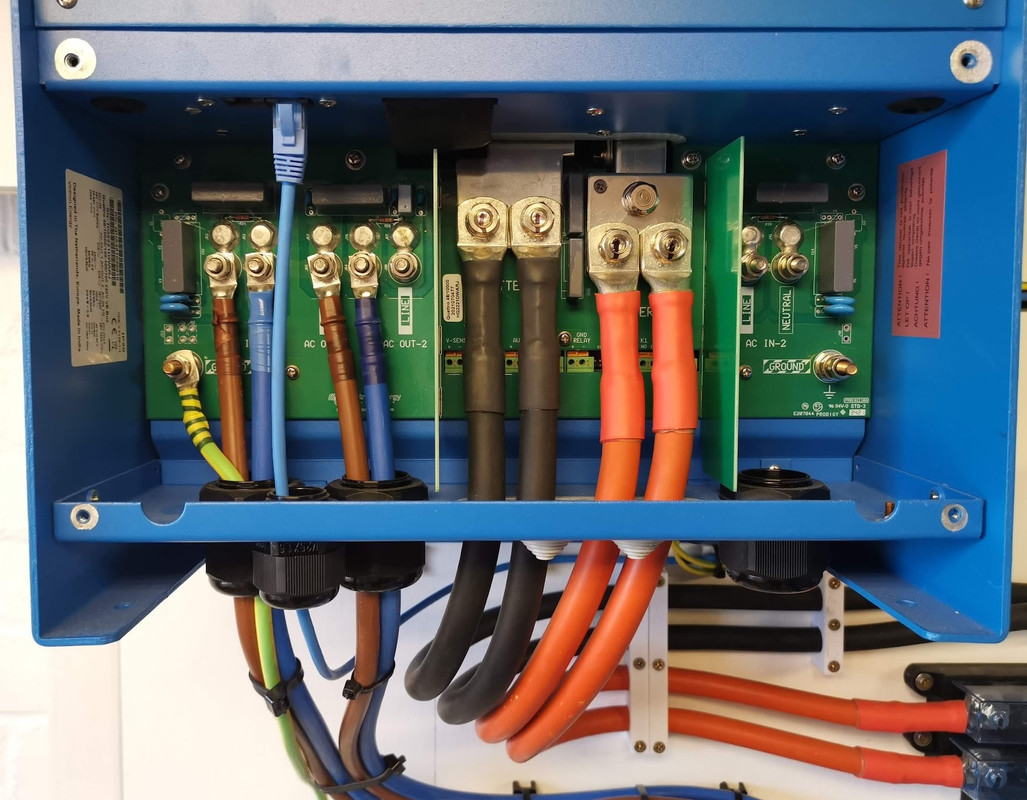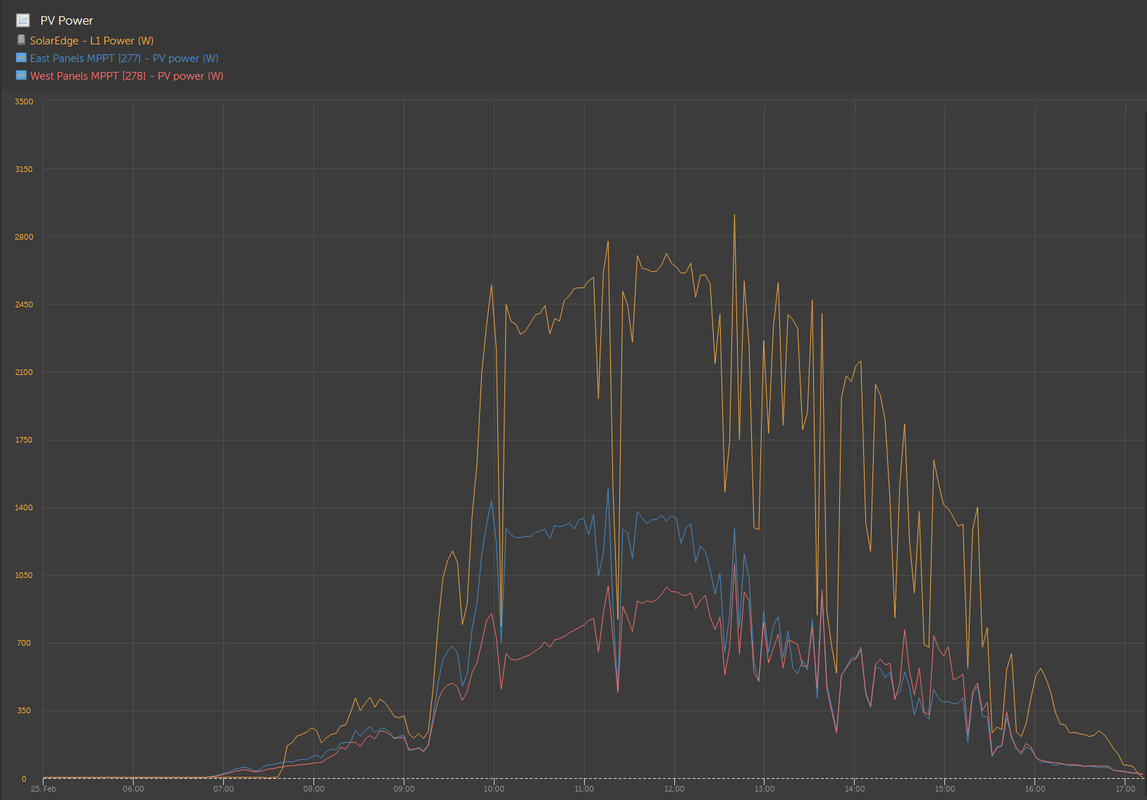Some pictures for you, note its not totally completed, new consumer unit to be fitted, labelling and some tidying up to be done. Covers removed for taking the picture.
House wiring, by consumer unit. You can probably work it out without me explaining.
Inverter wiring. Grid comes in on AC in 1, which is on the left, supply to consumer units goes out on AC out 1.
Switch gear and earthing. If you follow the earths, you can see that they are all linked together with the ground spike. Spare 25mm SWA is just a bit I had left over, so I put it in the ground and ran it back to the house wall, where in the future it could be used to supply a heat pump.
Emergency by pass switch gear/isolators (lockable)
If the inverter is turned off, the house loses power, so if there was ever a problem with the inverter, or it needed to be worked on, it can easily be bypassed, its just two change over switches linked together.
Some of you may have noticed the fused switch in the first picture was turned off, and this is the grid supply via the meter and DNO fuse, you have to turn it off to take the cover off, so whilst I removed the covers, took the pictures and put them back on we were running completely off grid.
So what happened you may ask? Well, pretty much nothing at first, the power stayed on, the server stayed running.
Then I noticed the SolarEdge PV had stopped generating, but I still had power, so in theory it should have been generating. Checking the frequency there was a small increase to 51.6Hz, not sure how long this lasted as the graphs are only in minute intervals, but the graph shows it was no longer than two minutes, then the frequency settled back to 50Hz and the SolarEdge PV started generating again. This proves that frequency shifting does stop the SolarEdge system from generating, this is very important.
In the extremely rare situation of the grid being off, the batteries being full, and the solar generating, the excess power needs to go somewhere, and that somewhere is the batteries, but eventually the BMS will shut off charging to protect the cells, also at some point the inverter will shut down. To prevent this the system is set to shift the frequency (this can only be done off grid) and shifting the frequency will shut down the SolarEdge PV. I do need to test this actually works, I believe it should happen at 95% state of charge, but now I do at least know the SolarEdge System does shut down. The Victron MPPT's will throttle back when the DC battery voltage reaches a set point, so these arn't an issue, just AC connected PV.
The other thing I noticed is that my server UPS went onto battery, probably due to the frequency increase, so need to check the settings there.
Best I get on with some work.










